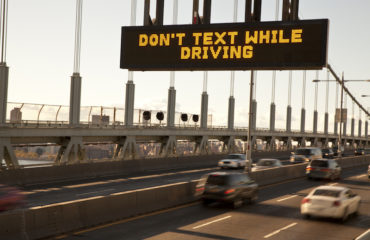“The Top Ten” is a common phrase heard when talking of:
- Sports, as in the top ten college football teams; or
- Music, with the top ten country music hits; or
- Entertainment, with the top ten movies in the theater.
There always seems to be a top ten list for a variety of activities. However, while those examples are well known, they will not have as much of impact on saving lives as the Top Ten list that was announced last Thursday, January 16th by the National Transportation Safety Board (NTSB).
On the 16th, the NTSB released its 2014 Most Wanted List, the top 10 advocacy and awareness projects for the independent government agency in 2014. NTSB deals with all transportation issues, thus the list includes such topics as airline safety, train safety and ferry safety. However, three on the Ten Most Wanted list will have a direct impact on motor vehicles: Eliminate Substance-Impaired Driving, Strengthen Occupant Protection in Transportation and Eliminate Distraction in Transportation.
Eliminating Impaired Driving
With more than 35,000 people killed in all modes of transportation annually, motor vehicle impaired driving accounts for nearly 1/3 of all transportation fatalities. Recognizing the significance of this issue, NTSB released “Reaching Zero: Actions to Eliminate Alcohol-Impaired Driving” in May 2013. With 19 recommendations, NTSB provides a path to reaching zero deaths. Will it be a challenge? Absolutely. As with anything worthwhile, it will take work and continuous effort to change behavior, implement appropriate laws, and incorporate the latest technology. However, it is possible, and NTSB has demonstrated its support and focus on this life-saving effort.
Strengthening Occupant Protection
Wearing a seat belt, using a child car seat, wearing a motorcycle helmet are all part of Strengthening Occupant Protection, and they are easy parts. In my opinion nothing has saved more lives since the introduction of the seat belt; in the upcoming years, nothing will save more lives globally than occupant protection. In one year in the U.S. seat belts saved an estimated 11,949 lives. Yet, there is still resistance to wearing a seat belt. There are parents who do not secure their daughter or son in a child car seat, and people who do not wear a motorcycle helmet. You could say it is common sense to do these actions. So I ask, is common sense dead? It is time for everyone to step up, speak out, and be safety conscious.
Eliminating Distraction
The third topic that can impact motor vehicles is the effort to Eliminate Distraction in Transportation. Distraction is a growing problem in all methods of transportation, not only motor vehicles. But once again, the number of fatalities because of distracted driving is significantly greater than in other kinds of transportation. Granted, distracted driving has been around since the automobile was introduced. However, with the development of new technologies and the increased demand to remain connected, distracted driving is growing to epidemic status.
It was with that as a background that the NTSB in 2011 recommended that the use of cell phones by all motor vehicle drivers be banned. This of course raised a number of objections. However, it is important to keep in mind that distracted driving is more than using a cell phone. Distraction comes in many forms and in various intensities—everything from texting while driving on one extreme, to putting in a CD on the other.
There Is More We Can Do
As with anything we become use to doing, we forget how complicated driving really is—it is a complex task that requires us to remain vigilant, understand what we see, and still have the manual dexterity and coordination to act. The more interactions a driver has, the more opportunity the driver will miss something – possibly something significant! How many times have I seen where a person is driving, with the music blaring, or the passengers talking loudly—and the driver gets lost. What is one of the first responses? The driver turns down the music or tells the passengers to be quiet because too much input doesn’t allow him or her to focus.
NTSB has declared that more has to be done to save lives, whether it is impaired driving, occupant protection, or distraction or any number of recommendations on other modes of transportation. NTSB has raised the bar to say more can be done. If we are serious road safety advocates, with thousands of people dying annually, how can we turn a blind eye? The NTSB Top Ten Most Wanted List provides a roadmap on what needs to be done tomorrow, and tells us what can be done today.
What do you think? Is there more that can be done? What have you done to be a safer driver? Let me know in the comments below.
To see an edited video clip of the press conference, click on the image below.








